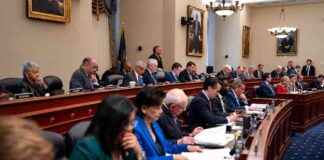**Navigating Trump’s ACA Subsidy Dilemma: What You Need to Know**
The landscape of healthcare pricing is shifting once again with the introduction of generic versions of two of the oldest GLP-1 drugs. This development has the potential to significantly impact the pricing of popular brand-name drugs like Ozempic and other versions of semaglutide, just as Medicare is considering coverage for these drugs for weight loss. The complexities surrounding these changes can be overwhelming, but understanding the implications is crucial for patients and policymakers alike.
**Unpacking the Impact of Generic GLP-1s**
The introduction of generic versions of old GLP-1 drugs opens up new possibilities for Medicare to negotiate lower prices for newer, more advanced medications. This shift comes at a critical juncture as the public health insurance program evaluates the inclusion of these drugs in its coverage for weight loss treatments. The potential cost savings from generic alternatives could have far-reaching effects on patient access and affordability, making these life-changing medications more accessible to those in need.
**Expert Insights on Healthcare Pricing Dynamics**
According to John Wilkerson, a Washington correspondent for STAT specializing in healthcare politics, the intersection of generic drug availability and Medicare coverage considerations presents a unique opportunity to address the escalating costs of essential medications. Wilkerson emphasizes the importance of understanding the complexities of these developments to navigate the evolving landscape of healthcare policy effectively. By shedding light on the implications of generic GLP-1s on drug pricing, Wilkerson provides valuable insights for stakeholders invested in ensuring equitable access to innovative treatments.
**Empowering Patients Through Informed Decision-Making**
As patients grapple with the complexities of healthcare pricing and coverage, staying informed about the latest developments in drug accessibility is crucial. The availability of generic GLP-1s has the potential to reshape the healthcare market, offering new possibilities for cost-effective treatment options. By staying attuned to these changes and advocating for transparency in pricing negotiations, patients can actively participate in shaping the future of healthcare affordability.
In conclusion, the introduction of generic GLP-1 drugs marks a significant milestone in the ongoing conversation about healthcare pricing and access. By understanding the implications of these developments and engaging with expert perspectives, patients and policymakers can work together to navigate the evolving landscape of healthcare policy with clarity and purpose.

















